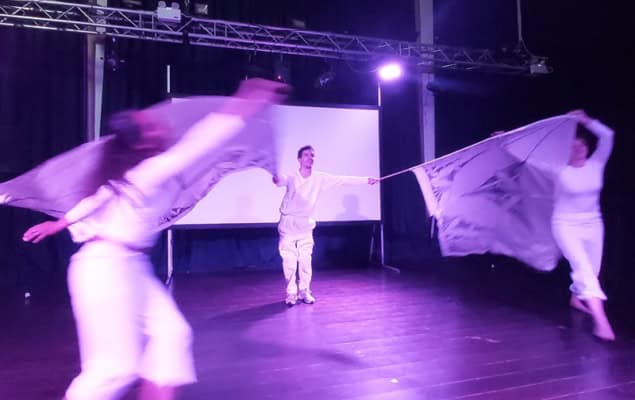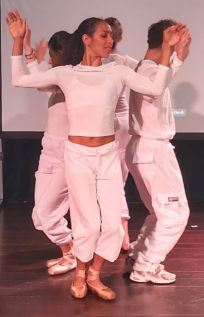Matin Durrani enjoys an evening that turned the science of aperiodicity into dance form

We all like order in our lives (well, I do at least) but things rarely operate that way. In fact, the world is full of “aperiodic” order – patterns that aren’t totally repetitive but not completely random either.
Aperiodic patterns can be found in Islamic art, such as the Tomb of Hafez and the Nasr ol Molk mosque in Iran. They’ve been studied in the 17th century by Johannes Kepler and more recently by Roger Penrose, famous for his aperiodic “Penrose tilings”.
You can also see aperiodicity in quasicrystals, such as aluminium palladium manganese. In fact, Dan Schechtman won the 2011 Nobel Prize for Chemistry for discovering these materials.
Aperiodicity is now the theme of a festival of art, science, music and performance that’s been taking place this summer in Bristol, UK. It’s included an academic meeting, an exhibition and a wonderfully entertaining dance performance that I attended last week.

Organized by my former Physics World colleague Anna Demming, a physicist and founding director of the South West Dance Theatre, the event was held at the city’s Trinity Centre. It began with a fun lecture on the science of aperiodicity by Sean Dewar, a mathematician from the University of Bristol, followed by 10 short dances that brought the subject alive.
Featuring Demming along with Katarzyna Niznik, Silvia Orazzo and Sebastián Morales Castillo, each dance – which combined classical ballet with breakdancing – was performed to a brilliantly eclectic mix of music ranging from Nina Simone and the BeeGees to Johann Sebastian Bach and Miley Cyrus.
I can’t imagine anyone has ever previously tried turning themes such as “Kepler’s tessellating pentagons”, “the limits of determinism” and “non-local indistinguishability and equivalence” into dance form, but that’s exactly what was on offer at the event.
There was even a nod to Hofstadter’s butterfly accompanied by Puccini’s O Mia Babbino Caro (pictured in the image at the top of this blog).
It was great fun – and even if the precise links of each dance with aperiodicity were slightly lost on me, I don’t think that really mattered. It was an event that simply got me – and the rest of the audience as well – thinking.


